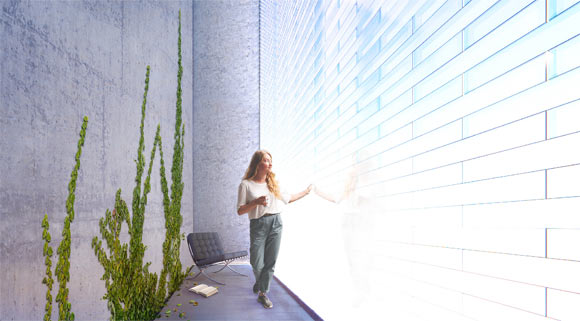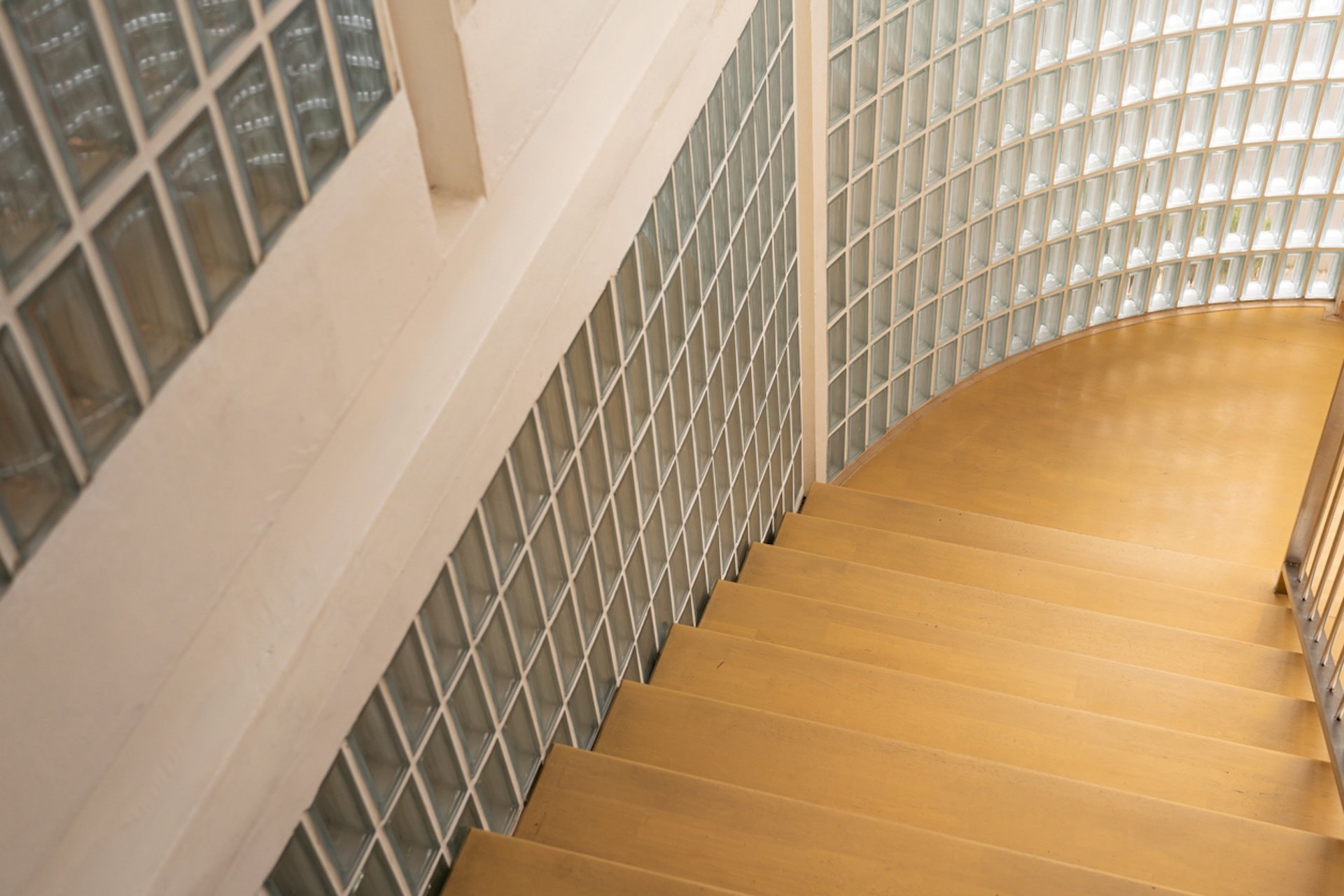Scientists develop game-changing ‘glass brick’ that could revolutionize construction: ‘The highest insulating performance’::The team of scientists developed an aerogel glass brick, which is a translucent and thermally insulating material.
I wish the article would have mentioned an R-value or at least something to describe the actual efficiency of its insulating ability.
Any time an article references another, immediately jump ship and read the original.
The glass brick has a measured thermal conductivity of 53 mW/m*K and a compressive strength of nearly 45 MPa.”
“This is the highest insulating performance of any brick found in the technical literature, let alone on the market. Additionally, it comes with the property of light transmission.”
https://www.sci.news/othersciences/materials/aerogel-glass-brick-11848.html
For comparison: From Seves Glass Block: "Unlike standard glass blocks that have a thermal transmission coefficient "U"of 2.8 W/sq mt x K), HTI has a “U” value of 1.8 W/(sq mt x K). (https://www.sevesglassblock.com/product/191916-hti-wave-sahara-2s/). So common glass block is 2.8, fancier glass block is 1.8, and this new Aeroblock 0.053!! I think I did my numbers correctly, and DANG! I wan’t to start building walls with this stuff tomorrow!!
Also: Get the light & keep the warmth - A highly insulating, translucent aerogel glass brick for building envelopes https://www.sciencedirect.com/science/article/pii/S2352710222016060
Edit: Looks like my numbers are off, above, per @A_A@lemmy.world. Clearly, I’m neither an architect, nor a mathematician.
Anything to get rid of modern vinyl houses.
Masonry is always worth it for housing, we need to go back to building houses that’ll still be habitable a century later.
Except earthquake prone areas, and maybe others I’m not thinking if. Wood isn’t the problem, cheap+fast wood is.
Houses generally will last a century with basic maintenance. Modern US construction techniques are a lot more thought out than is generally acknowledged.
I’m more concerned with things becoming “outdated” in aesthetic ways. A properly installed tiled bathroom (including the bath stall) can last a long, long time, but future owners might not like the look and tear it all out. Recycling it all is a laughable dream. There are designs, though, that stand up to the test of time, and we should be pushing those more.
Man.
I wish my standard of living was so high I’d think redoing a bathroom for aesthetic choices was a common run of the mill thing everybody’s just doing on a whim.
Congrats.
It’s fairly common. People with money hire contractors to do the work for them. People that want to save money tend to DIY it. But redoing bathrooms is quite common.
It does happen all the time. If a flipper buys a house, redoing an old bathroom is one of their first things they think of.
You are confusing the units : the value for aerogel is for a 1 m thick wall, while the value for your glass blocks is for 16 centimeter (one block thick). So an error of 16/100 ratio (or 100/16).
whoops! TY! Umm, wait, a 1 meter thick wall of aerogel?
WMK values are generally quoted as transmission for 1m thick for insulating materials. (watts lost per meter squared per delta kelvin).
For example, PIR board is about 0.022. So for 100mm thick, it would be 0.22W lost per degree difference.
The aerogel glass is quoted at 0.053
Mineral wool is 0.038
Brick is 0.600 on a good day.
Pure aerogel is about 0.018.
Glass is about 1.000 (varies).I can see this being used in situations where light is needed, but a window is not.
I can definitely see the benefits of making utility walls out of it.
It’s going to be expensive though, at least until aerogel prices come down.
And it’s not going to beat using the same depth of PIR board, or mineral wool. (assuming the numbers are all correct)
Or include a picture of the actual material instead of a stock photo of a glass brick stairwell…
The source article has this “visualisation”:

From that I’d assume it’s not suitable for windows, but it is suitable for taking advantage of natural lighting (not to mention it just looks pretty cool… though I’m not sure about the rest of the architecture in that image).
It’s also good at broadcasting to your neighborhood whether or not you’re home.
In these times?
You install smart lighting to mimic human presence.
Burglars put up wireless cameras to be sure You left.
Home Alone 2046
Sorry, I’m just curious, is 2046 in reference to something or just random?
In reference to Blade Runner 2049.
You mean like how windows do now?
A quick search yields an R value of 9.6-20 per inch for already available aerogel insulating materials. So a standard exterior wall would have a 3.5"(2x4) or 5.5" (2x6) cavity giving R values of 33.6 and 52.8 respectively at the lower efficiency and cheaper options. That is better performance than pretty much any other option, but the cost is like 10-30 times that of other options.
If they are containing the aerogel granules in glass, which seems to be the case, the thermal bridging would be an issue for efficiency. A solid glass block has an R value of 1.15… A triple glazed window has an R value of 7-8.
The better option than glass block would be filling the cavity of a double glazed window with aerogel granules, which would cut down on thermal bridging to the just the sash/casing and would be more economically viable for production.
but the cost is like 10-30 times that of other options
Are you just talking construction costs? How about if you consider the lifetime energy consumption of a building over, I dunno, 50 years? And using zero emission heating, since in 50 years we hopefully are not using fossil fuels for that.
Obviously that’s going to vary dramatically depending on the indoor/outdoor temperature delta and future renewable energy costs, so there are too many variables to come up with a number easily, but I could see these bricks being very cheap if you factor int he total cost over the life of the building.
The better option than glass block would be filling the cavity of a double glazed window with aerogel granules
Glass works ok for small windows - but large glass panels are fragile and expensive.
Aerogel is also fragile
Isn’t aeorogel really expensive to begin with? I mean we have tech like Ytong and they are still using bricks in buildings. Why? Ytong seems expensive to uneducated who have no clue about TCO and engineering.
Aerogel is insanely expensive. It has an R-value of 10 per inch and the handy property of costing about $1 per R-value per square foot. So a piece of aerogel 1" thick by 4’ x 8’ would cost $320; the equivalent piece of 2" thick XPS foam board (also R-10) costs about $50 these days. So with aerogel you’re paying a 500% to 600% premium to have your insulation be half as thick as XPS would be - and to essentially have no compression resistance at all (vs. the 20+ PSI of foam board).
Me, I’m noticing the distinct lack of any information on cost or cost-effectiveness.
So if you could theoretically let out a big enough fart, it would be visible on Google Maps.
Wrong post my friend
And yet Lemmy is so small I immediately knew which post they were referring to.
deleted by creator
Wow wtf my comment didn’t go to the post I intended. Huh.
I’m still thoroughly intrigued.
Yea I need to see this fart post
Pretty sure it’s this one: https://lemmy.world/post/11988042
Must’ve been related to pyrocynical
Wait, I want to hear what he was to say.
Yeah but then I’d have to stop throwing stones, and that’s one of my favorite pastimes.
You just have to go touch grass first.
Touch grass, break glass, crush ass
Aren’t we running out of sand? How is this a sustainable option.
We’re running out of concrete sand, glass sand doesn’t have to be as picky because you’re melting it
So “technically” right but not “completely” right. Thanks for the explanation.
This was Anakin’s plan along
Aerogel isn’t made our of sand
It’s made from sodium silicate… Which is made from sand.
Aerogel is also 99% air. So not much sand.
Great, now we’re going to run out of air
But will the shareholders be ok?
Yes in a time where all insulated homes are desperate to keep the cool in during summer, adding more light through will really help us.
Is this a joke or do you just not understand what “insulation” means?
Do you?
I do. Thanks for asking.
Ok, can you help me understand what you don’t understand in the sentence I wrote then?
Insulation helps maintain a difference in temperature between outside and inside. Right?
It doesn’t matter whether than temperature differential is “warmer inside” or “colder inside”. Right?
If you let infrared light into a house it will heat up. Right?
If you aim to keep the inside cool, letting light into the house works against you. Right?
Given that the planet is warming up, many well-insulated houses get too hot in the summer. Right?
I don’t understand how we can both understand how insulation works, yet you can’t understand the sentence I wrote. Maybe you missed my sarcasm, that’s the only thing I can imagine could have gone wrong.
Infrared light is not the same as visible light. Why would you assume that letting visible light in would also imply letting infrared in?
I think the idea here is that controlling the temperature of your house with a heating/cooling system would be much more efficient if your house is better insulated. The fact that this also lets in natural light, makes it better for a living space since you wouldn’t need artificial light. I really don’t think it’s that hard to understand.
Houses can have a “greenhouse” effect. Light passes through, and strikes something. It is absorbed and turned to heat. The object then radiates that as infrared. Thermally shielded windows then trap this in the room. With enough insulation, and enough light, this can become a significant issue.
This is assuming, however, that these bricks are transparent to visible light, but opaque to IR.
That, and I don’t know how much visible light contributes to heat inside a home. Even so, you could just coat the bricks in something to absorb the visible light.
It’s more for public buildings with glass fronts. “Revolutionize construction” is a questionable headline. Aerogels have use for replacing insulation in other ways, though.
“Revolutionize construction” is a questionable headline.
How about: revolutionize one very specific part construction under certain niche circumstances? Rolls off the tongue!
I can’t imagine there’s any reason they couldn’t make an opaque version of the same. Would probably look pretty cool in black. Or better yet, make them electrochromic so you can have more light in the winter and less in the summer.
I mean, I’m all for better insulated homes. I will say it’ll be hard to convince people to go for this aesthetic, though. It’s very 80s.
I don’t think the photo at the start of the article has anything to do with it, it’s credited as a stock image. Was there another picture?
Right now I feel like MCM is having a moment sooooo maybe in twenty years the prices on this will go down and 80s style will be back in fashion?
If only we had 20 years. In 20 years this shit won’t matter because we’ll be on the other side of that precipice, barreling toward oblivion.
Melt glass, inject air bubble, insert mixer and spin thousands of times. Pour into mold.












